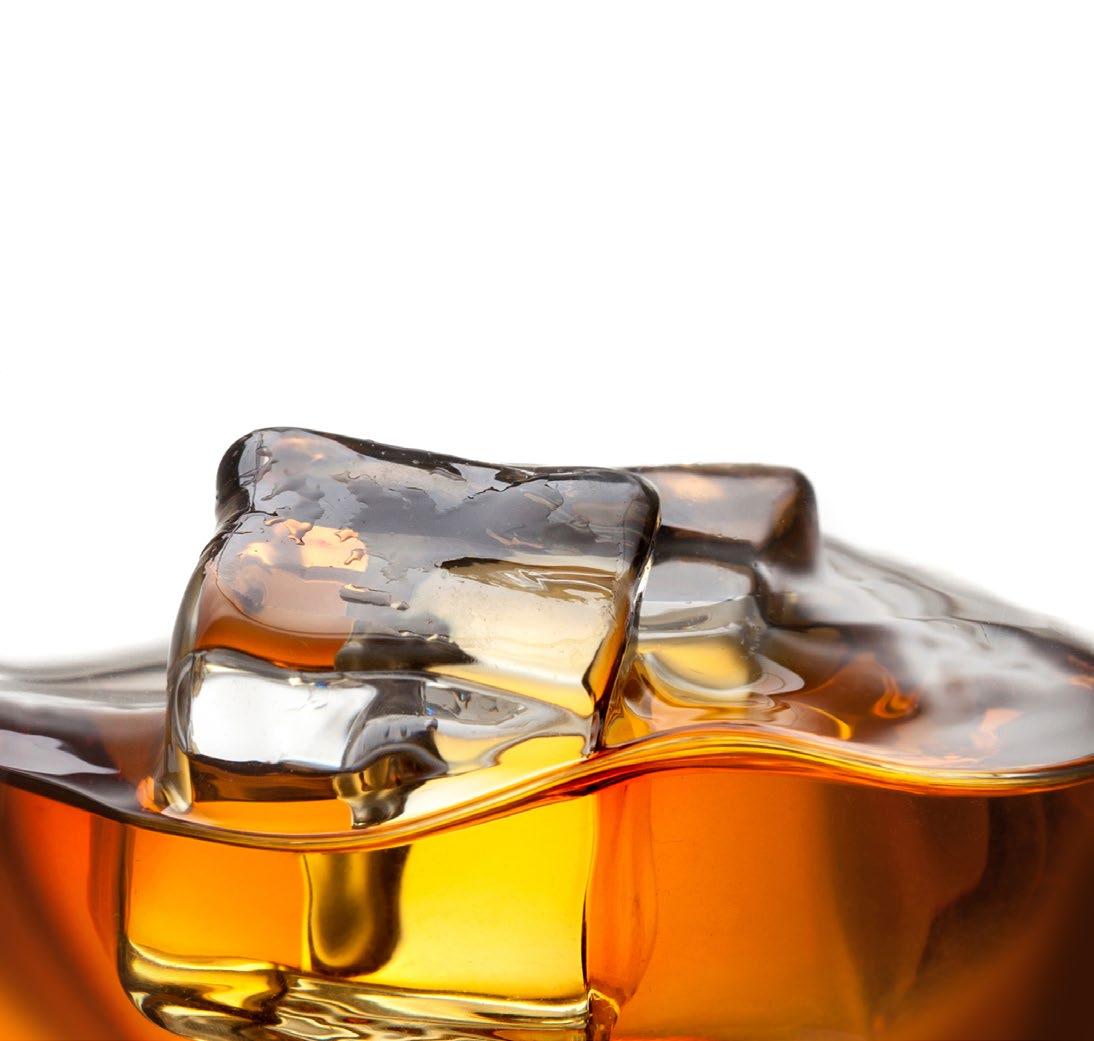
4 minute read
The Whisky Trail
whisky trail
Scotch whisky is a treat that travels well, but there’s nowhere better to savour a dram than at its home in the Highlands. Here, you can drink your whisky with a view of the hills or coastline it came from, with knowledge from a visit to the very place where it was distilled, adding depth not just to your taste, but to your memories too.
Advertisement
The soft, clean water of the West Highland countryside is perfect for a drink that prides itself on purity, while the availability of peat, particularly in the islands, has long enabled producers to dry grain over a peat fire, producing a distinctive smoky flavour. The process of mashing grain, then fermenting, distilling and maturing may be common across distilleries, but each site has its individual character and story to share, making every visit a unique experience – and that’s even before you start to sample their wares. Today, Scotch is an internationally recognised brand and one of Scotland’s most successful exports, with the most popular varieties enjoyed in over 200 countries. The industry generates millions in revenue and taxes each year, but that hasn’t always been the case. Like the countryside where it is produced, whisky’s history has been a turbulent one. Several of today’s reputable companies started on the sites of illicit stills, and their remote, often coastal locations owe as much to an historic effort to conceal production from the tax men - and to enable the export (or smuggling) of casks by sea – as they do to the rich supply of rural resources. Take the trail Across this region, working distilleries have long welcomed members of the public to sample their wares and view their warehouses. Many are set in beautiful surroundings, from Ben Nevis, near the foot of the mountain that shares its name, to Caol Ila, which boasts breathtaking views of the Paps of Jura. Whether you are a seasoned whisky connoisseur, or new to Scotland’s national drink, a distillery visit is a chance to be introduced to something different in the company of experts who will guide you through the experience – and even if you are not a fan of whisky, you might be surprised. Due to coronavirus, distilleries are working with restrictions to their ability to welcome visitors and host tastings and tours, at time of going to press. This might mean events moving outside, tours operating with limited numbers or not at all, or compulsory bookings. If you are planning a visit in 2021, we recommend that you make contact direct to check that the distillery is open to visitors, and to find out how the latest government guidelines will affect your plans.
Our readership encompasses three of Scotland’s premier whisky regions; Highland, Campbeltown, and Islay.

Islay
On a break in windswept Islay, Scotland’s whisky capital, you can sample flavours in style at one, or all, of the vibrant distilleries. These range from globally-known brands such as Ardbeg, to centuries-old independents like Bowmore, the tiny Kilchoman, and brand new Ardnahoe – the island’s ninth distillery. Creating the right atmosphere for visitors to enjoy a sampling is part of the Islay custom, whether that means lounging in comfy leather chairs in the Edwardian drawing-room at Lagavulin, exploring the informative exhibition space at Laphroaig, or gathered around one of the pub-style benches at trendy Bruichladdich. While each has its own character and traditions, they share spectacular settings and a commitment to craft.
For a bonus distillery to complete your Islay trail, hop on the ferry at Port Askaig to the neighbouring Isle of Jura, home to Jura Whisky.
Campbeltown
Situated at the east of the Mull of Kintyre, Campbeltown was once the West’s whisky capital and home to 30 distilleries – it had the perfect conditions, from peat bogs for fuel to fertile fields for growing barley. Today, the operation is smaller and the town hosts just three distilleries, producing whiskys that are known for being bold and smoky. Springbank, Glen Scotia and Glengyle (which produces Kilkerran) are all within walking distance of the town centre. Local hotels also offer a wide but locally-influenced selection and expert whisky-tasting advice.
Highland (including islands)
Geographically the broadest of Scotland’s whisky re-
gions, the malts from this area are as diverse as the landscapes that inspire them. This region includes Argyll, Arran and the Inner and Outer Hebrides, and takes in celebrated names such as Talisker and Torabhaig, made from the sparkling waters of the Isle of Skye, and historic town centre distilleries such as Oban and Ben Nevis (in Fort William) where they are integral to the architecture, as well as the character, of the area.
The last decade has also seen a boom in the opening of new distilleries, particularly on smaller Hebridean islands, where conditions are ideal and they add a new dimension to a small destination’s offering for visitors.
The Isle of Harris distillery is maturing whisky to sell alongside its now-celebrated gin, and distilleries on Raasay, Tiree and Coll are joining the Highland offering.













